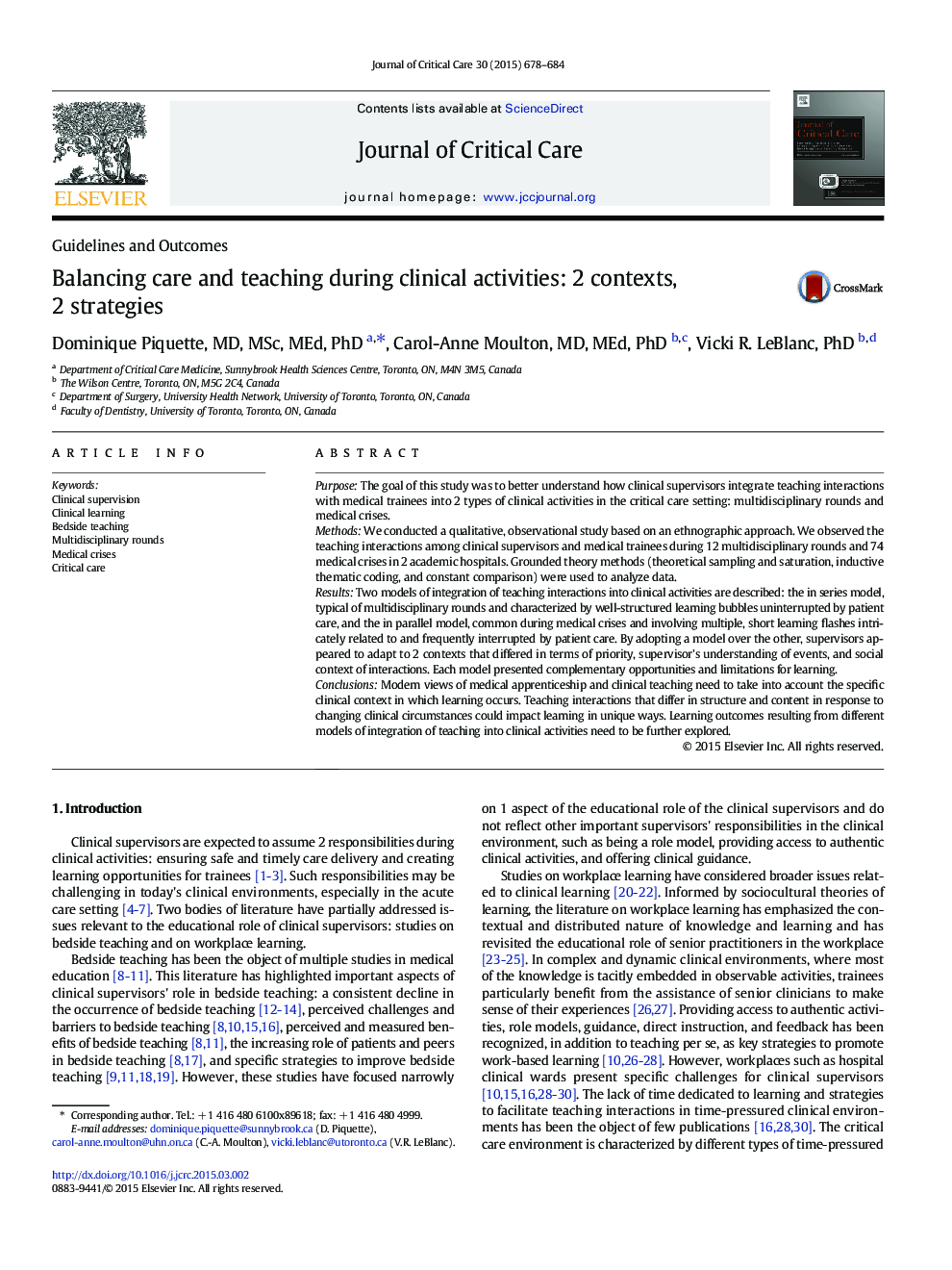| Article ID | Journal | Published Year | Pages | File Type |
|---|---|---|---|---|
| 2764515 | Journal of Critical Care | 2015 | 7 Pages |
PurposeThe goal of this study was to better understand how clinical supervisors integrate teaching interactions with medical trainees into 2 types of clinical activities in the critical care setting: multidisciplinary rounds and medical crises.MethodsWe conducted a qualitative, observational study based on an ethnographic approach. We observed the teaching interactions among clinical supervisors and medical trainees during 12 multidisciplinary rounds and 74 medical crises in 2 academic hospitals. Grounded theory methods (theoretical sampling and saturation, inductive thematic coding, and constant comparison) were used to analyze data.ResultsTwo models of integration of teaching interactions into clinical activities are described: the in series model, typical of multidisciplinary rounds and characterized by well-structured learning bubbles uninterrupted by patient care, and the in parallel model, common during medical crises and involving multiple, short learning flashes intricately related to and frequently interrupted by patient care. By adopting a model over the other, supervisors appeared to adapt to 2 contexts that differed in terms of priority, supervisor's understanding of events, and social context of interactions. Each model presented complementary opportunities and limitations for learning.ConclusionsModern views of medical apprenticeship and clinical teaching need to take into account the specific clinical context in which learning occurs. Teaching interactions that differ in structure and content in response to changing clinical circumstances could impact learning in unique ways. Learning outcomes resulting from different models of integration of teaching into clinical activities need to be further explored.
